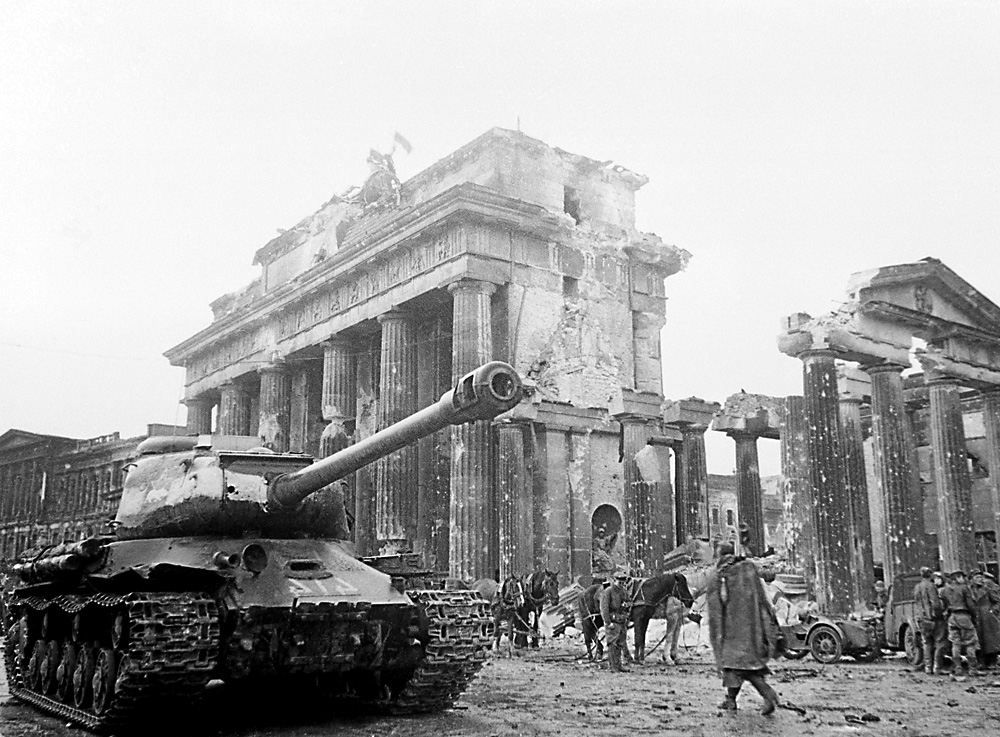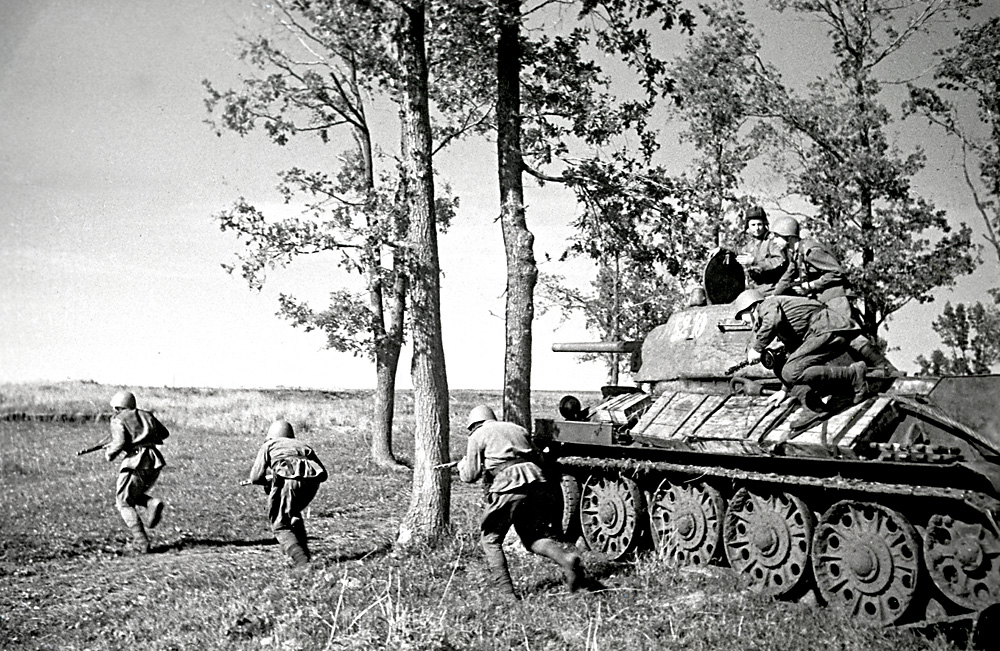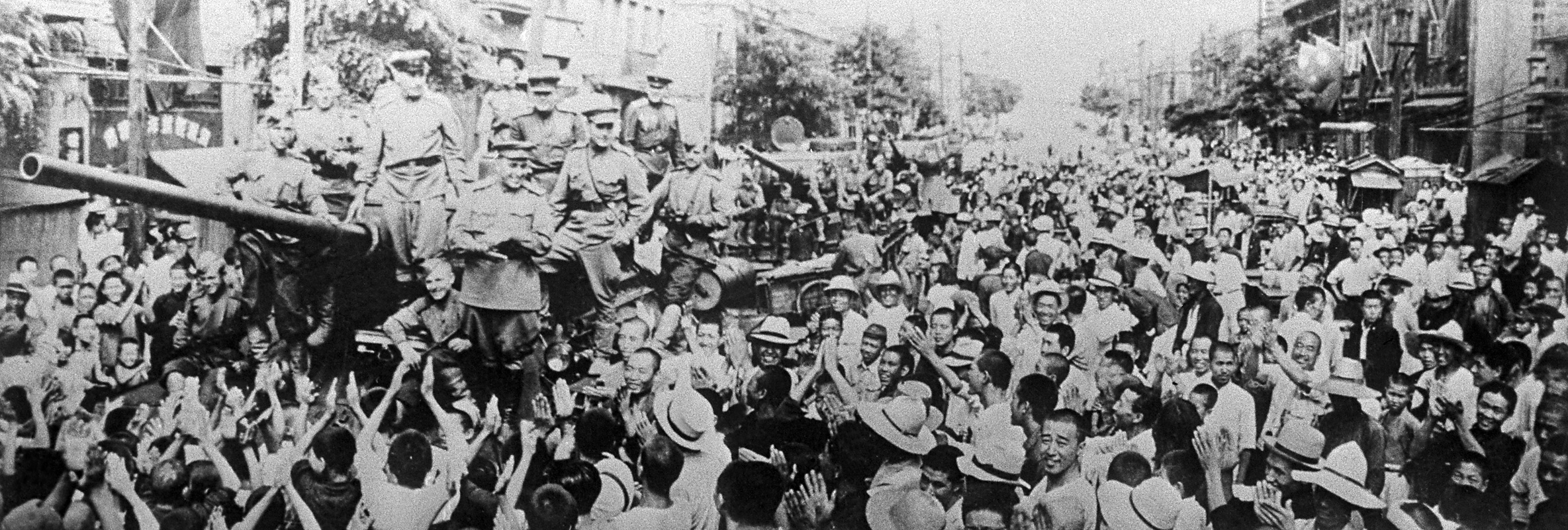
A Soviet tank near the Brandenburg Gate in Berlin. May of 1945. Source: V. Grebnev / TASS
After the German invasion in June 1941, it took a long time for the USSR to recover from the miscalculations made in the pre-war years and cost the country huge losses in men and material. By the third year of the war, however, many errors had been fixed. The Red Army had got rid of its massive, unwieldy machines, leaving it with a modern, mechanized force.
While the tank divisions could boast of improved motorization and better-trained crews, problems still remained, the most important of which concerned tactics for use of the armoured forces. Here the Soviet generals still had a lot to learn.
This was clearly demonstrated in the Battle of Kursk, one of the largest battles in world history, in which an unprecedented number of soldiers fought on both sides. One of the biggest tank clashes in history, the Battle of Prokhorovka, happened near Kursk in July 1943. No one talked about the real results of that battle during the Soviet years. Everyone thought it was an indisputable Soviet victory. But the truth was different.
 Soviet soldiers in the Battle of Kursk. July 1943. Source: Fedor Levshin/RA Novosti
Soviet soldiers in the Battle of Kursk. July 1943. Source: Fedor Levshin/RA Novosti
The Soviet command's attempt to stop the German offensive with a frontal blow, using tanks in a narrow part of the front, proved a failure. They ploughed ahead in rough terrain, with the enemy having a definite advantage in terms of armament, with disastrous effects.
The advancing Soviet units lost over half their tanks; 2.5 times more than the Germans. Only Soviet successes in the other parts of the front saved the situation. But the Soviet command was then faced with the problem of how to use its tank forces.
In the second half of the Second World War, Soviet generals finally understood that the tank was not a universal war instrument. It needed to be used correctly to utilize its advantages to their full potential.
There was no sense in having tank units storm the enemy's prepared fortifications. Modern anti-tank artillery can easily eliminate practically any armoured advantage. Concentrating tanks in armoured handfuls and using them in different sectors also has a series of shortcomings – primarily it leads to the dispersal of forces.
The tank is the modern equivalent of the cavalry. It is better to use an armoured handful in a situation when the storming of enemy positions has already begun. To break through enemy lines, it is better to use infantry reinforced with tanks. In the event of a successful tactical breakthrough in a narrow territory, the tank turns into a threatening weapon of destruction.
In 1944-1945, the Soviet command confidently broke through enemy lines with their tank armies, expanding the breach, cutting the rear communications, throwing back the enemy's reserves and isolating its units, creating huge salience.
In the early days, successful attacks by the Red Army's tank divisions would usually be stopped rather quickly by the Wehrmacht, and often with infantry alone. But, towards the end of the war, the Soviet tanks made it to the German rear, which basically meant the destruction of the whole front. In April 1945, the tank wedges of the two Soviet fronts united west of Berlin and sealed the fate of Hitler's capital.
The operations on the German front were often planned and realized "off the cuff;" there was just no time for thorough organization. But the Soviet offensive against the Japanese Kwantung Army in Manchuria in summer 1945 was a real masterpiece of operational art.
It was no less significant in scale than the largest battles against the Wehrmacht. The Soviet army had to surround and destroy the enemy's well-armed million-strong army on an enormous territory. And here the protagonists were the tanks.
 Manchuria, China. Locals greet Soviet liberators after Japan’s surrender on Sept. 2, 1945, ending World War II in the Pacific. Source: Alexander Stanovov/TASS
Manchuria, China. Locals greet Soviet liberators after Japan’s surrender on Sept. 2, 1945, ending World War II in the Pacific. Source: Alexander Stanovov/TASS
Carrying out the command's orders, the Soviet tank army realized a manoeuvre unprecedented in its complexity. Having moved through hundreds of kilometres of Mongolian desert, surmounting mountain ridges, the army made it into the enemy's far rear, where no one had expected it.
The tanks immediately entered battle, obliterating three of the enemy's divisions, and encircling the entire Kwantung Army. Today the USSR's armoured forces' actions in the Manchurian Operation are still considered a shining example of military strategy and are studied in military academies all over the world.
However, it took four years of heavy losses and mistakes before this incredible victory.
All rights reserved by Rossiyskaya Gazeta.
Subscribe
to our newsletter!
Get the week's best stories straight to your inbox